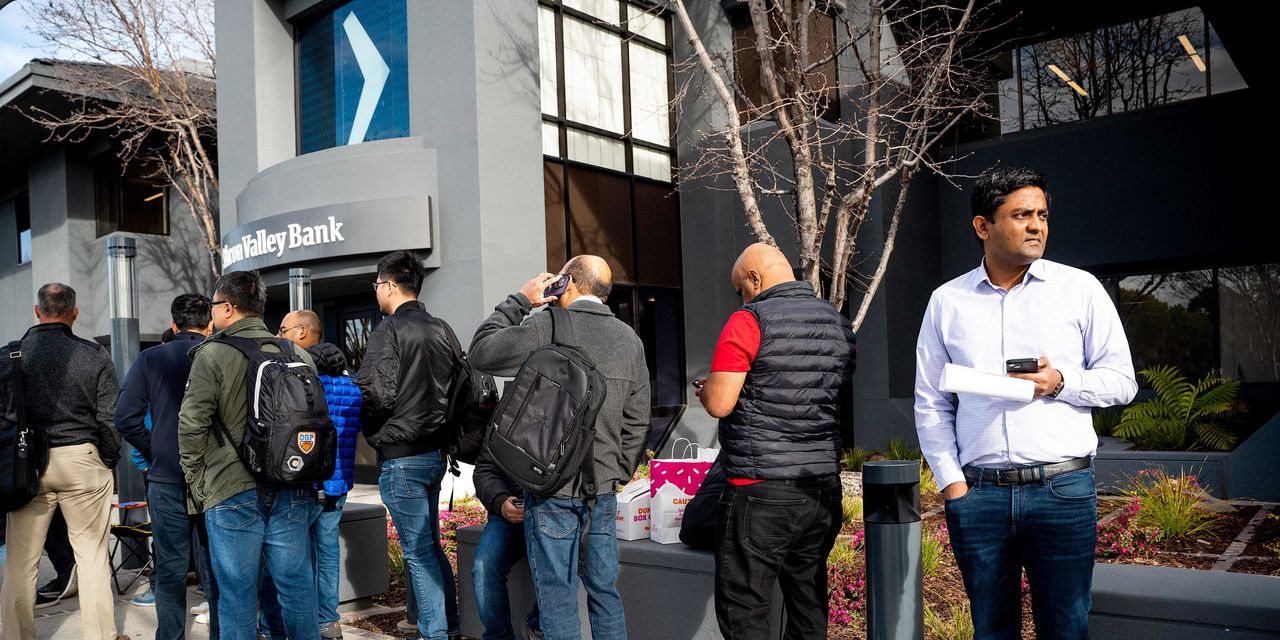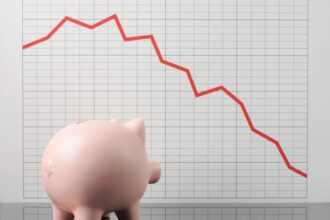Peter Dziedzic knows what it’s like to stick with a bank. He’s shared the same Iowa credit union savings and checking account with his husband for well over a decade.
But an ex-Silicon Valley Bank customer, he now knows what it’s like to switch accounts. After this latest switch, he’s done with switching. It took a banking crisis to force him to move.
A former Silicon Valley Bank, Peter Dziedzic recently opened new bank accounts. He has no plans to do it again.
Courtesy Peter Dziedzic
When Silicon Valley Bank descended into Federal Deposit Insurance Corporation control earlier this month, Dziedzic had less than a week to figure out payroll for his eight employees.
He had even less time to determine where the weekend money from customers’ credit-card payments would go.
“There were all these weird puzzle pieces and I had zero information,” said Dziedzic, who co-owns skoah Boston, a facial spa in the South End of the city, with his husband. So he did what he could on that frantic Friday afternoon. He started new accounts at a HarborOne bank branch he could see from his bedroom window.
Dziedzic is pleased with the new accounts. His last act this week was making sure a final check for a remaining $187 from the old account settled in the new one. Of course, that’s after paperwork, notifications to suppliers, new automatic deduction instructions, and more.
What is it like changing bank accounts while running a business? It’s like opening a new credit card after an online hack or losing card, he explained. But there’s one big caveat: “It’s that, except times one hundred.”
The health of the banking system is in sharp focus after the closures of Silicon Valley Bank, Signature Bank, and the UBS
UBS,
purchase of Credit Suisse
CS,
for $3 billion. An array of smaller, regional banks are also under pressure
Investors and customers are worried about deposit outflows and the potential for customer ‘bank runs’ for cash, like the one that trampled Silicon Valley Bank. Federal regulators said depositors at Silicon Valley Bank and Signature Bank would have access to all their money by Monday, March 13, not just was under the FDIC’s $250,000 threshold.
Treasury Department officials are reportedly weighing if they can temporarily expand the guarantee to all bank deposits, not just those below the $250,000 level.
But it takes a lot for people to switch bank accounts, experts said — and the FDIC guarantees of deposit insurance up to $250,000 are just one reason.
Convenience anchors people to the accounts they already have, and know how to use, they added. Then it becomes harder for many people to switch than to stay put.
“ ‘Because of convenience and inertia, most account holders are reluctant to move to another financial institution even if they know there are better deals available by doing so.’”
It’s tough to fully say how many people switched bank accounts recently, though some reports indicate the country’s biggest banks saw influxes. Still, the vast majority of Americans are likely to have stayed with their current financial institution, according to experts.
“Because of convenience and inertia, most account holders are reluctant to move to another financial institution even if they know there are better deals available by doing so,” said Greg McBride, chief financial analyst at Bankrate.com.
People use the same primary checking account for an average 17 years, according to a 2022 Bankrate survey. That’s also roughly how long a homeowner stays in their home, according to the National Association of Realtors. Cars on the road are roughly 12 years old on average, according to a AAA spokesman, but it’s difficult to know if the car has only had one or multiple owners.
Around one third of people said they primarily banked at large national banks, according to a recent survey of more than 2,000 people from DepositAccounts.com, an online platform to search rates on checking accounts and certificates of deposit.
Pollsters conducted the survey in early February, weeks ahead of the current crisis. And yet only 13% said they were definitely going to switch from where they banked, with lower fees being the top-cited justification, the poll said.
“Many consumers focus mostly on checking accounts at their banks, and large national banks can be convenient to use for checking accounts,” Ken Tumin, founder of DepositAccounts.com, said in a statement.
“People use the same primary checking account for an average 14.3 years, according to a January 2020 Bankrate survey. That’s roughly how long a homeowner stays in their home,”
But Tumin also noted how consumers stick to a bank once they’ve signed up. “Once a consumer has an established checking account, the inertia typically prevents them from changing,” he added.
Dziedzic knows the feeling of being in a “sticky” relationship with his bank. Silicon Valley Bank acquired Boston Private in 2021, the bank that lent skoah Boston its initial loan in 2010, and there was no change in the level of customer service. So he continued to do business with the new bank.
Similarly, Dziedzic’s husband already had accounts at Veridian Credit Union for years by the time they met. He too was not for turning. The fees were lower than Dziedzic’s account, so that was that. He stayed with his credit union.
Veridian has recently been emphasizing to customers that the credit union is “financially secure and well-positioned for the future.”
Better rates, lower fees, easier smartphone banking are some of reasons people generally switch from one financial institution to another, said a Veridian spokeswoman.
“We know that when consumers stay with a financial institution through periods of dissatisfaction, it’s often because of their perception of the inconvenience of switching. However, the process of switching has become increasingly digital and, therefore, more convenient,” said Andrea Hudnut, a Veridian spokeswoman.
One J.D. Power survey of bank customers shows the gap between dissatisfaction and action. Nearly eight in 10 people said they would stick with a bank when they felt it supported them in tough times, but around four in 10 said their banks were coming through on this.
And yet, nearly two-thirds of polled consumers said they “definitely” wouldn’t be changing their banks, the survey noted.
If it wasn’t for Silicon Valley Bank’s failure, Dziedzic said he’d still be doing he banking there. Since the bank’s failure and formation of a “bridge bank,” he hasn’t has any additional outreach. Not a call from their banker, not even a mass email.
His guess is it takes a lot to nudge many people out of their banking routine. He knows it did for him. “I only thought about this one account because I had to.”
Tips for switchers
In a time of rising interest rates, the annual percentage yields on certain savings accounts and checking accounts may be quite tempting. Rates are one part of the consideration, while fees, customer service and mobile banking capacity are other factors.
Still, customers don’t have to leave their bank to increase their FDIC coverage, McBride said. They can do it through multiple accounts in different ownership categories, like individual, joint, trust and retirement accounts, McBride said.
“Moving your savings account is easily and quickly done, but if you’re moving a checking account you probably want to keep the original account open for a month or two to make sure you’ve remembered to change all the direct deposits and automatic payments tied to the account,” McBride said.
Read the full article here










